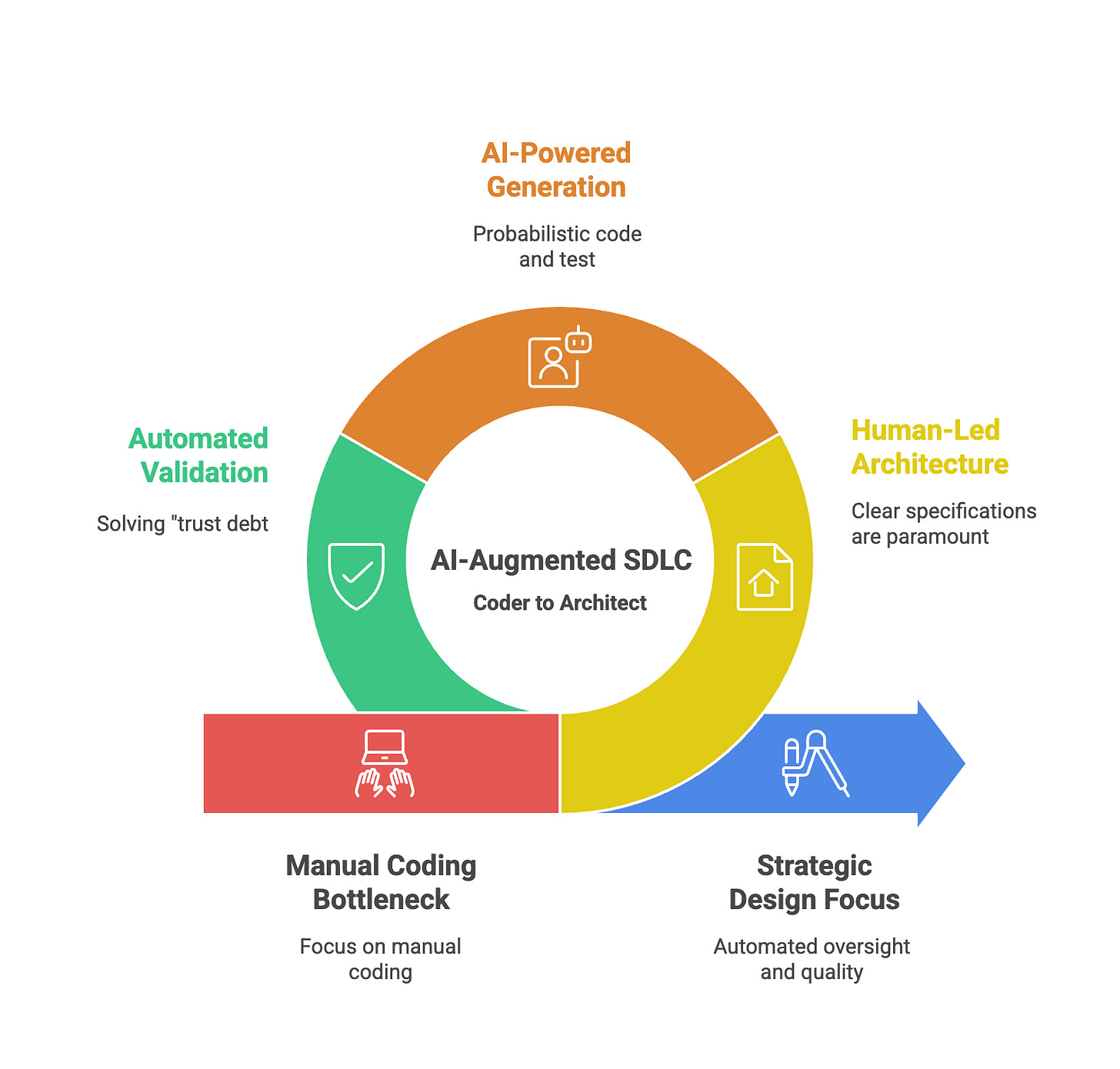My Take: AI is Forcing an Evolution from Coder to Architect
The conversation around AI coding assistants has moved beyond hype and past the simple question of if we should adopt them. The real question now is how we fundamentally re-architect our Software Development Lifecycle (SDLC) to leverage them. From my perspective, trying to just slot AI into existing workflows is like bolting a jet engine onto a horse-drawn carriage. It’s not an upgrade; it’s a fundamental mismatch.
When I talk about "AI" here, let's be specific, I'm not referring to abstract artificial general intelligence. I’m talking about the tangible impact of Generative AI and Large Language Models (LLMs)—the technology powering tools like GitHub Copilot and evolving into the more autonomous, agentic systems we're starting to see. This distinction is critical because we're dealing with probabilistic systems, not deterministic ones, which changes everything.
The initial fear of AI creating an army of "vibe coders"—developers who sling prompts without understanding the logic—misses the bigger picture. In my experience, while AI can generate syntactically correct code, it has no real grasp of architectural intent, scalability, or security. This paradoxically makes the role of senior engineers more critical, not less. The "blast radius" of an AI-generated failure is immense. When a junior developer can scaffold a service in minutes, the burden of ensuring it's resilient and secure falls on the architects. The game is no longer just about writing code; it's about defining the invariants and engineering the boundaries for these new probabilistic systems.
This infographic illustrates how Gen AI is re-architecting the software development lifecycle, shifting the focus from manual coding to strategy
The most profound impact isn't just faster coding; it's how AI shifts the entire SDLC left, pushing crucial quality and testing considerations to the very beginning of the development process. We're heading towards a future where AI agents take a well-defined specification and generate not just the implementation, but the entire suite of tests to validate it. This highlights a critical shift in leverage for engineering leadership: the focus moves from optimizing lines of code to ensuring the clarity of the specifications produced at the outset. An ambiguous requirement fed to an AI will inevitably result in what I call "technical debt in disguise"—code that works but is inefficient or insecure. The new bottleneck isn't typing speed; it's the speed and rigour of our design thinking.
This introduces a crucial new challenge: "Trust Debt." When AI generates vast amounts of code, the cognitive load on senior engineers for code review skyrockets. How do we validate logic that was generated in seconds but could take hours to fully comprehend? The focus must shift from manual line-by-line review to automated validation, architectural conformance checks, and robust observability. We need to build systems that allow us to trust the outcomes of AI-generated code, which means investing heavily in AI-driven testing and a culture of rigorous, automated verification.
Looking ahead, a fully AI-augmented SDLC is on the horizon, where AI is a true partner in operations. AI agents that analyze production telemetry to suggest refactoring opportunities or autonomously patch security vulnerabilities are the logical endpoint of this shift. For engineering leaders, the mandate becomes clear: to build the platforms and cultural frameworks that enable this future, transforming the SDLC from a series of manual steps into a cohesive, intelligent system.
Ultimately, the narrative around the developer role becoming obsolete is a distraction. The real story is one of profound evolution: a shift from developer to system architect, where the focus moves from the how of writing code to the what and the why of building resilient systems.
What's the single biggest change you've made to your SDLC to accommodate AI assistance? I'd love to hear your thoughts.



